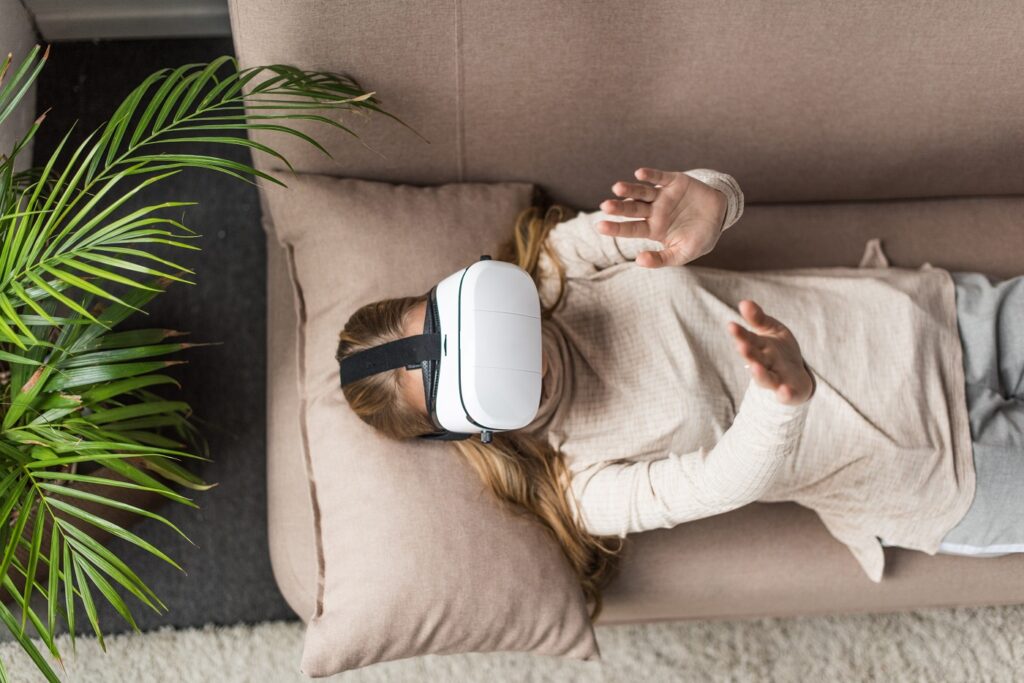Virtual Reality Therapy in PTSD Treatment: Welcome to an in-depth exploration of the effectiveness of virtual reality (VR) therapy for patients with Post-Traumatic Stress Disorder (PTSD). This comprehensive guide delves into how VR technology is revolutionizing treatment approaches, providing evidence-based insights and clinical findings. Join us as we examine the impact, benefits, and potential limitations of VR therapy in managing PTSD symptoms.
Understanding Virtual Reality Therapy in PTSD Treatment
Before exploring the specific effects of VR therapy on PTSD, it’s essential to understand what VR therapy entails and why it’s considered for this condition.
What is Virtual Reality Therapy?
Virtual reality therapy involves using VR technology to create simulated environments that therapists use to expose patients to situations similar to those they find traumatic. This controlled, immersive experience allows patients to confront fears and triggers in a safe and manageable setting. But why are healthcare professionals turning to VR therapy for PTSD patients?
The Appeal of VR Therapy in Treating PTSD
VR therapy offers a novel approach to traditional exposure therapy by enabling detailed, controlled, and repeated exposure to trauma-related cues without physical risks. How does this method improve on traditional techniques? VR can be finely tuned to each patient’s specific needs, allowing for gradual exposure to trauma in a way that is often faster, safer, and more controlled than real-life settings.

Evaluating the Effectiveness of VR Therapy
To understand the effectiveness of VR therapy for PTSD, it’s important to look at both clinical outcomes and patient responses.
Clinical Outcomes of VR Therapy for PTSD
Studies have shown that VR therapy can significantly reduce PTSD symptoms, such as flashbacks, avoidance behaviors, and hyperarousal. Research published in journals accessible via PubMed demonstrates that VR therapy not only reduces these symptoms but also contributes to a long-term resolution of PTSD in many cases. But what specific aspects of VR therapy contribute to its effectiveness?
Patient Experiences and Satisfaction with VR Therapy
Patients often report high levels of satisfaction with VR therapy. Many appreciate the ability to face their fears in a controlled, confidential environment, which can make therapy feel more secure and less intimidating. Insights from ScienceDirect articles highlight patient testimonials that underscore the perceived benefits and the transformative potential of VR therapy.

Case Study: VR Therapy in Action
Background: Consider the case of John, a veteran diagnosed with PTSD after returning from deployment. Traditional therapy methods were initially helpful, but certain symptoms persisted.
Implementation and Response:
- Customized VR Scenarios: John underwent VR therapy sessions that simulated combat-related scenarios that triggered his PTSD symptoms.
- Therapeutic Progress: Through controlled exposure to these virtual scenarios, John gradually learned to manage his responses and significantly reduced his PTSD symptoms.
Outcomes: John’s case illustrates how VR therapy can offer effective coping mechanisms for PTSD patients, providing them with tools to manage their symptoms effectively.

Challenges and Future Directions in VR Therapy for PTSD
While VR therapy is promising, it is not without its challenges.
Limitations and Barriers to Access
The cost of VR technology and the need for specialized training can limit the availability of VR therapy. How is the healthcare community addressing these challenges? Ongoing research and technological advancements are making VR more accessible, and training programs are increasingly including VR therapy techniques.
Exploring the Potential for Broader Applications
Researchers are also exploring the use of VR therapy for other psychological conditions, such as anxiety disorders, phobias, and depression, suggesting a broad potential for future applications.
Concluding Thoughts: Virtual Reality Therapy in PTSD Treatment
Virtual reality therapy represents a significant advancement in PTSD treatment, offering new ways for patients to confront and manage their symptoms. As technology advances and becomes more accessible, it may become a standard part of PTSD therapy regimens.


